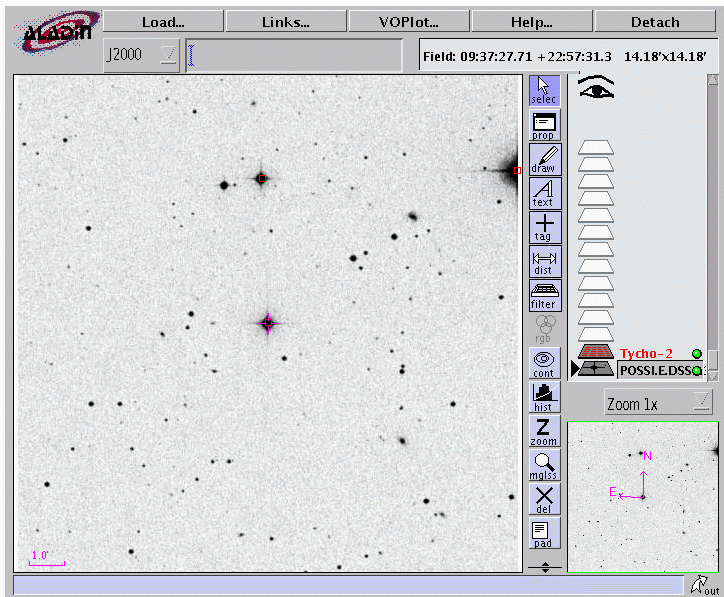
On the night of May 11, 2004, we tried to observe the occultation of a ninth-magnitude star by asteroid (1616) Filipoff. The asteroid was sixteenth magnitude, so if it did pass in front of the star, the dip in brightness would be very large: seven magnitudes! It should have been easy to see.
The plan:
Our original idea was to videotape the event, but I discovered (and then remembered) that the intensified video camera we had used in the past -- which could have detected the target star very easily -- had returned to its owner several months ago. He had lent it very kindly to the observatory several years ago, but then retrieved it to take on an observing trip to better climes. Sigh.
Adam Regula helped me to set up the telescope and point it to the right field. He and I together tried using three other video cameras which were available; could any of them detect the target star? We tried a monochrome Astrovid 2000, a color Astrovid "Planet-Cam", and a ToUCam. All could pick up the Galilean satellites of Jupiter, at around fourth magnitude, but showed nothing of a 7th or 9th magnitude star. Well, that was no surprise, but we felt we ought to check, just in case.
The field looked like this:

I could easily see the target star (dead center), both components of the double star to the north, and the bright star to the northeast simultaneously with direct vision in the eyepiece. I estimate the limiting magnitude was about 12.5, since the fainter component of the double has B=12.9, V=11.7 in the USNO A2.0 catalog.
I watched steadily from 04:58 UT (five minutes before the predicted event time) to 05:07 UT (four minutes afterwards). I saw no dip in brightness. The dip SHOULD have been dead obvious -- the star would have gone from mag 9 to mag 16, disppearing completely from my view. The predicted maximum duration was only 1.3 seconds, so it's possible that I might have blinked or squinted and missed a brief partial occultation of smaller amplitude ... but I really don't think I could have missed the full event.
Two other observers along the predicted path (as we were) have reported no event, so my guess is that the actual path was shifted some distance to the side. We'll learn more as additional reports come it.
added 5/14/2004
David Dunham has collected reports from observers in the Northeast
US. He writes (slightly edited):
2. The following 5 observers monitored 9th-mag. TYC 1959-01346-1 in Leo the morning of May 12, but saw no occultation by (1616) Filipoff; it was quite hazy at most locations, with the star only about 1 mag. above threshold with my C-8, f/3.3 focal reducer, and PC-164C; the 7th-mag. star nearby sure helped finding it. Observer Place W. Long. N. Lat. observed Scope Tony Cecce Big Flats, NY 76d 55' 12" 42d 07' 52" 10" Dob, vis Don D'Egidio PlymouthM, PA 75.310 deg. 40.125 deg. 4:45-5:30 11" SCT, vid David Dunham Cowentown, MD 75d 48' 06" 39d 41' 14" 5:02-5:08 8" SCT, vid Mike Richmond Rochester, NY 77d 39' 53" 43d 04' 33" 4:58-5:07 40cm Cas,vis Joe Sedlak Mastens C, DE 75.617 deg. 38.964 deg. 5:01-5:07 10" Dob, vis Don was at Colonial Observatory, in Plymouth Meeting, PA. Bruce Thompson had an unlucky cloud move over the target star area at Ithaca, NY, and Charles Poplinger had equipment problems at his mobile site about ten miles west of my site, which was just a few miles west of Newark, DE. _____________________________________
For more information on occultations by asteroids, check out
Last modified 5/12/2004 by MWR